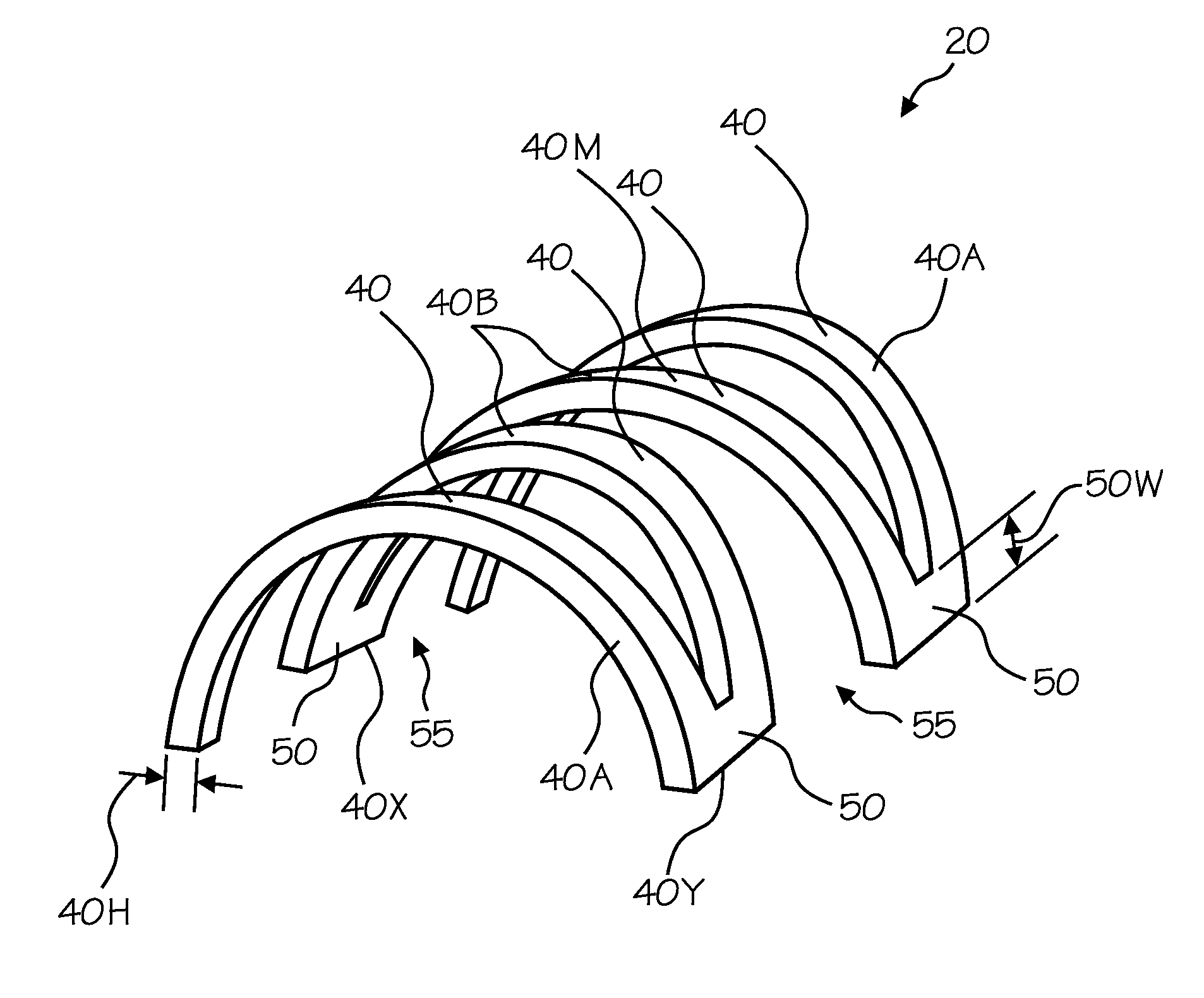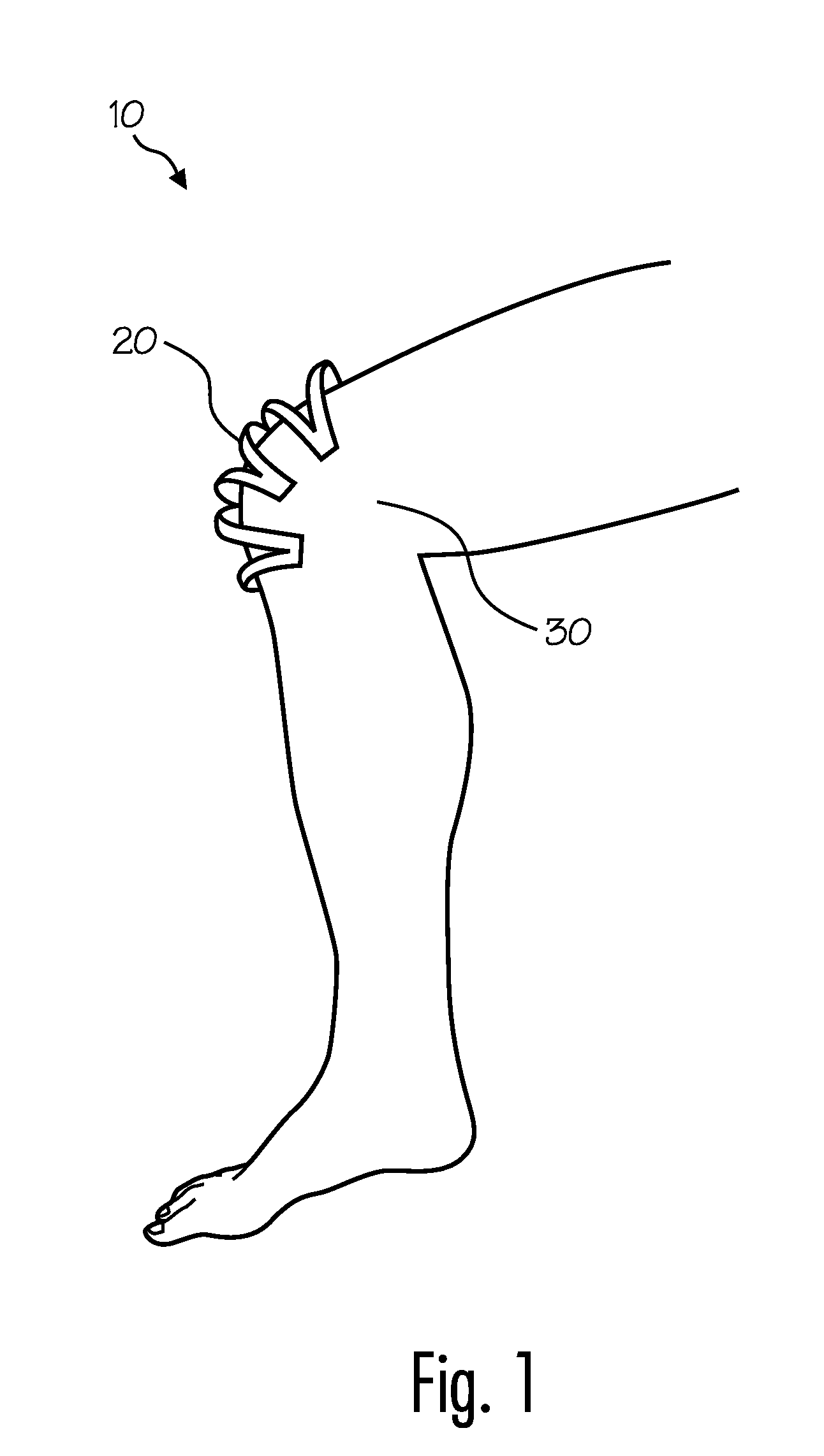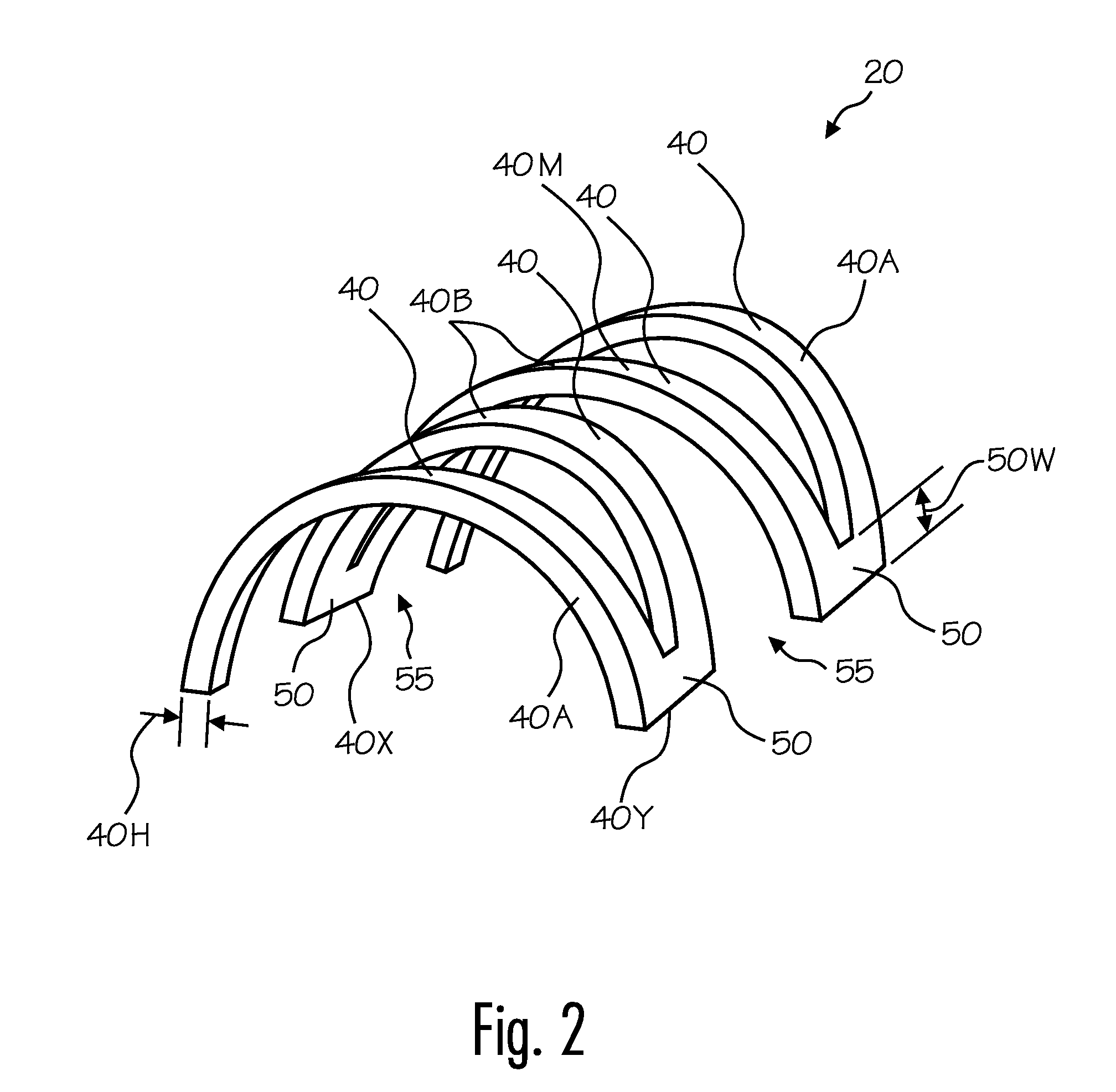Flexible structural apparatus, spring, wound covering, and methods
a flexible structure and spring technology, applied in the field of flexible structures and springs and methods, can solve the problems of increasing healing time, increasing scarring or damage, and worsening the health of patients, and achieve good flexibility
- Summary
- Abstract
- Description
- Claims
- Application Information
AI Technical Summary
Benefits of technology
Problems solved by technology
Method used
Image
Examples
Embodiment Construction
[0011]Various embodiments of the invention provide, for example, as an object or benefit, that they partially or fully address or satisfy one or more of the needs, potential areas for benefit, or opportunities for improvement described herein, or known in the art, as examples. Some embodiments of the invention provide a flexible wound covering, for example. In some embodiments, for instance, a flexible (e.g., domed) structure flexes with body movement, but presents a barrier which prevents objects from pressing against or exerting a force against the wound. In particular embodiments, for example, the domed structure comprises interconnected individual structural members. The individual structural members may collectively provide strength and resistance to collapse, but may also be interconnected in such a way that the wound covering provides good flexibility and accommodates some stretching and complex movement, for example. These and other aspects of the present invention may be re...
PUM
 Login to View More
Login to View More Abstract
Description
Claims
Application Information
 Login to View More
Login to View More - R&D
- Intellectual Property
- Life Sciences
- Materials
- Tech Scout
- Unparalleled Data Quality
- Higher Quality Content
- 60% Fewer Hallucinations
Browse by: Latest US Patents, China's latest patents, Technical Efficacy Thesaurus, Application Domain, Technology Topic, Popular Technical Reports.
© 2025 PatSnap. All rights reserved.Legal|Privacy policy|Modern Slavery Act Transparency Statement|Sitemap|About US| Contact US: help@patsnap.com



